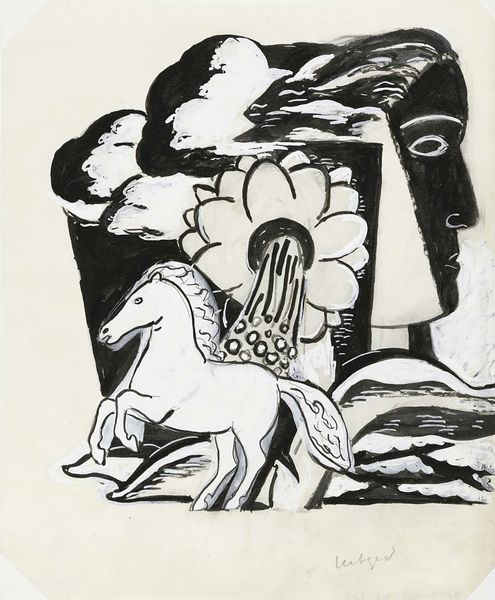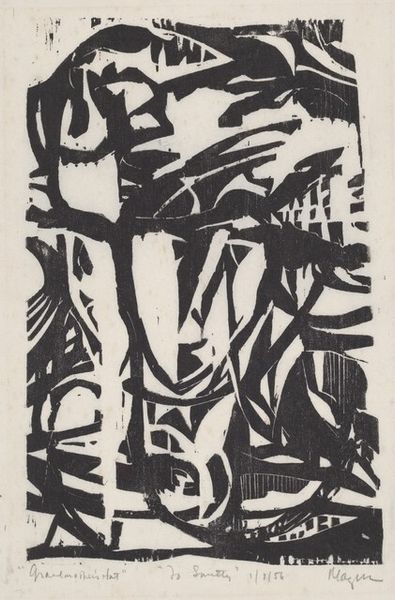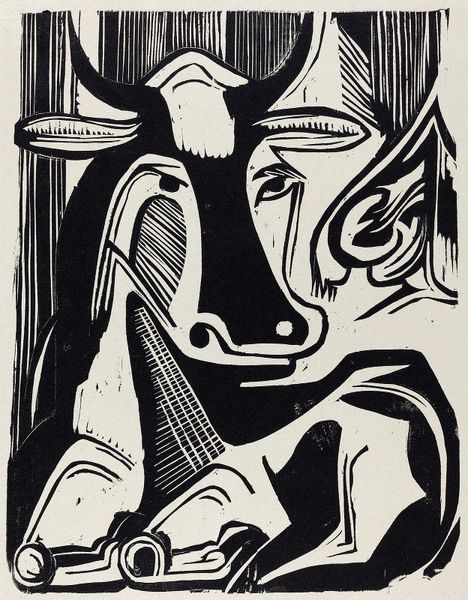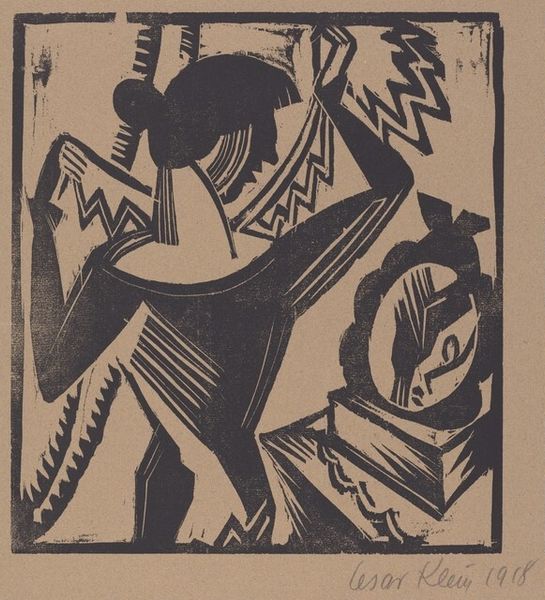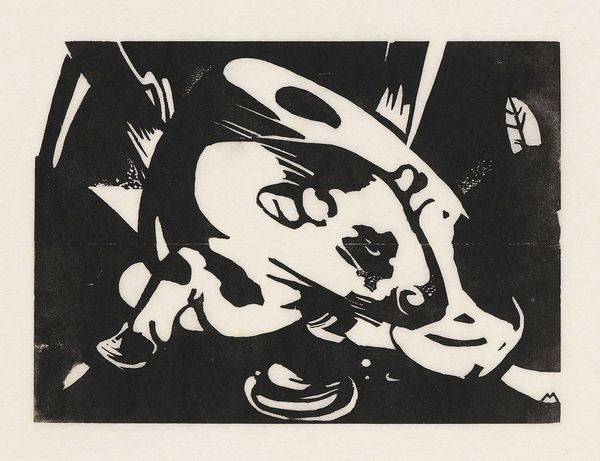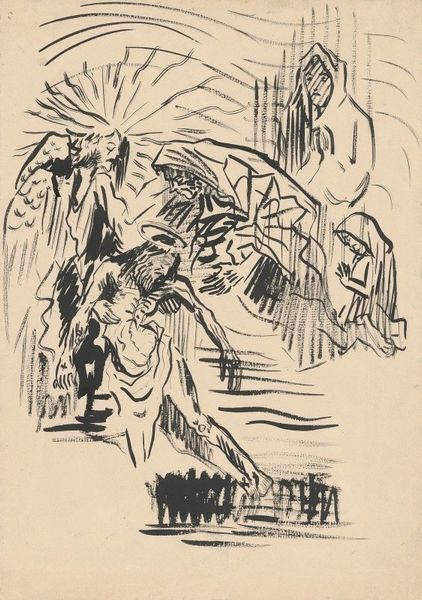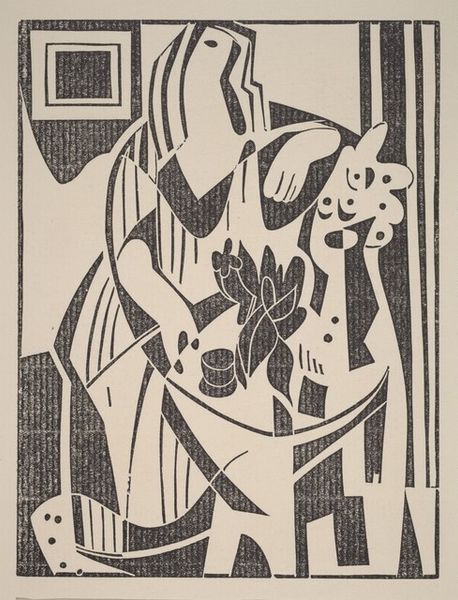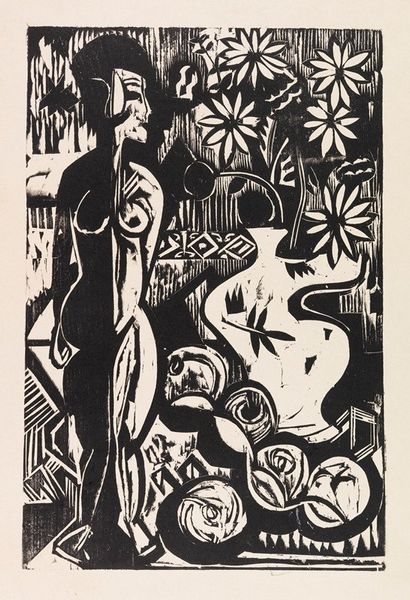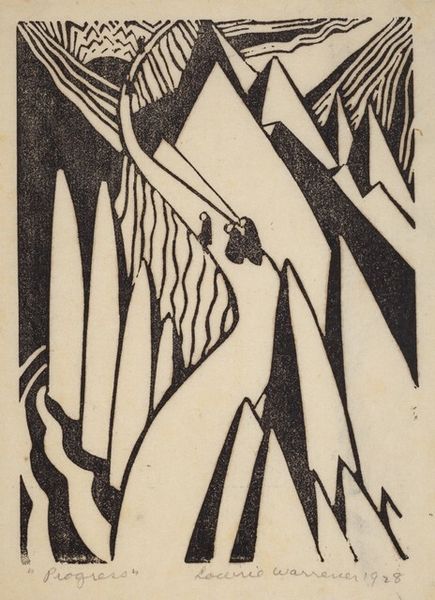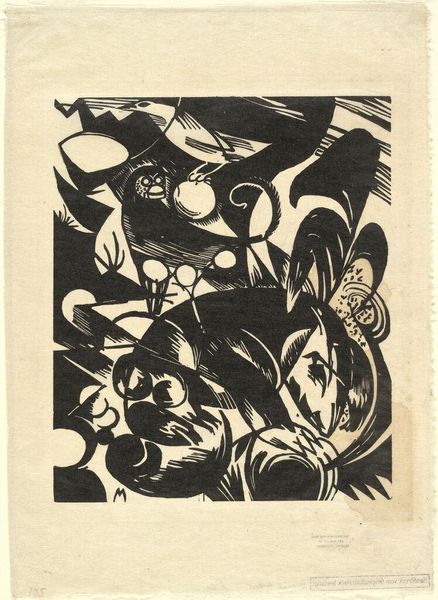
Dimensions: height 277 mm, width 218 mm, height 210 mm, width 200 mm
Copyright: Rijks Museum: Open Domain
Editor: Here we have Leo Gestel's "Steigerend paard, bloem en kop," a mixed-media work, probably a painting, from before 1941. It feels quite bold to me, this contrast between light and dark shapes, and the figures seem symbolic. How do you interpret this work? Curator: I see a potent visual statement born from a tumultuous era. Gestel created this on the cusp of World War II; how do you think the anxiety of the time might have impacted his artistic choices? The stark contrasts, the fragmented forms – it speaks to a world fractured by conflict and uncertainty. The horse, often a symbol of freedom and power, seems restrained here, almost trapped within the composition. Editor: That's interesting. It almost feels like these familiar shapes--the horse, the flower--are being deconstructed before our eyes. Is that a characteristic of Expressionism? Curator: Exactly! And consider the placement of the human head, almost like a looming, detached observer. Could this represent the artist's own sense of displacement or the broader societal anxieties surrounding identity and control? Notice how the flower, typically a symbol of beauty and fragility, is rendered with such geometric rigidity. It lacks any softness. Editor: It really does. Almost like beauty is being weaponized, or maybe controlled. What about the symbolism of the flower itself? Curator: Well, what does the flower bring to mind for you? Think about broader historical representations...often, it symbolizes hope, but also the ephemeral nature of life, its fleeting beauty. Editor: So perhaps Gestel is commenting on the loss of innocence, the fragility of life in a world consumed by war? Curator: Precisely. The painting seems to be a reflection of a world wrestling with itself. Seeing these visual elements through the lens of social and political turmoil enriches our understanding. Editor: That definitely changes how I see it. The abstraction isn't just about style; it's a response to the world. Curator: Yes! It serves as a potent reminder that art doesn't exist in a vacuum. By connecting the artwork with these issues, we unlock its deeper meanings.
Comments
No comments
Be the first to comment and join the conversation on the ultimate creative platform.
